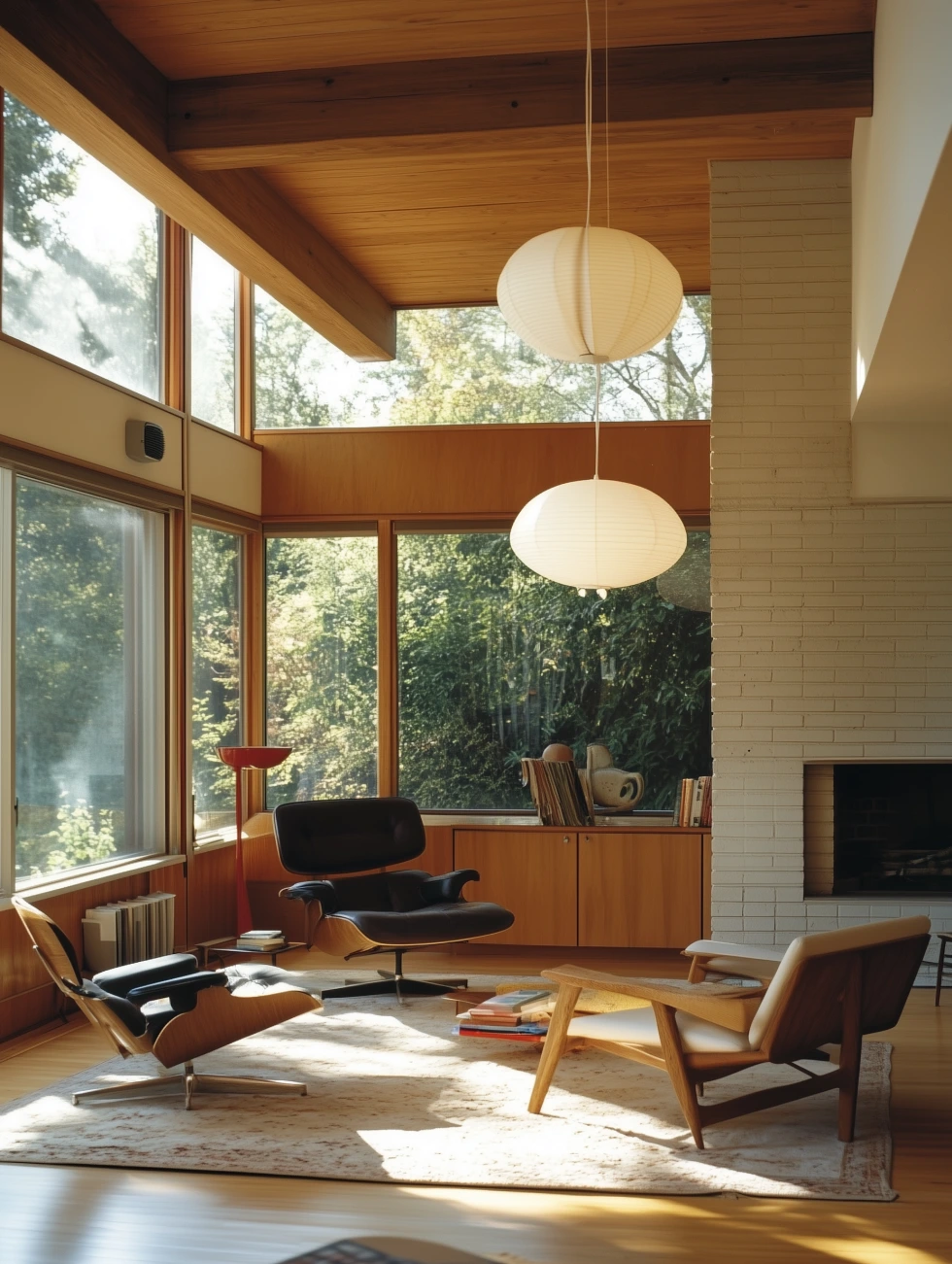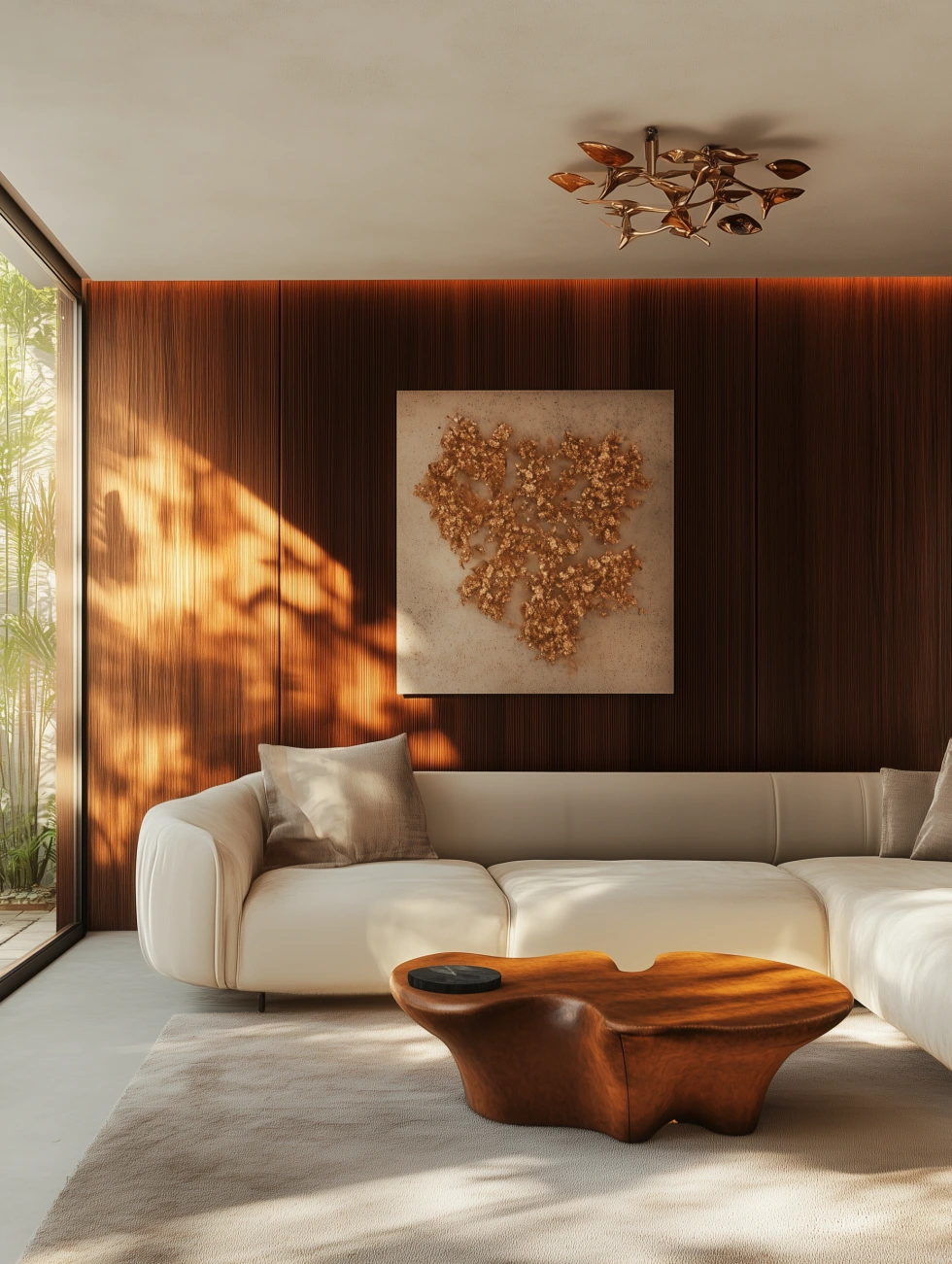
7 Essential Elements for Timeless Style
Mid-century modern design has captivated interior enthusiasts for decades, blending nostalgia with contemporary aesthetics to create living spaces that feel both timeless and fresh.
This style, which flourished from the 1940s to the 1970s, continues to charm homeowners with its clean lines, organic curves, and seamless integration of indoor and outdoor elements.
Creating a perfect mid-century modern living room requires understanding the balance between functionality and form, while embracing simple elegance rather than cluttered opulence.
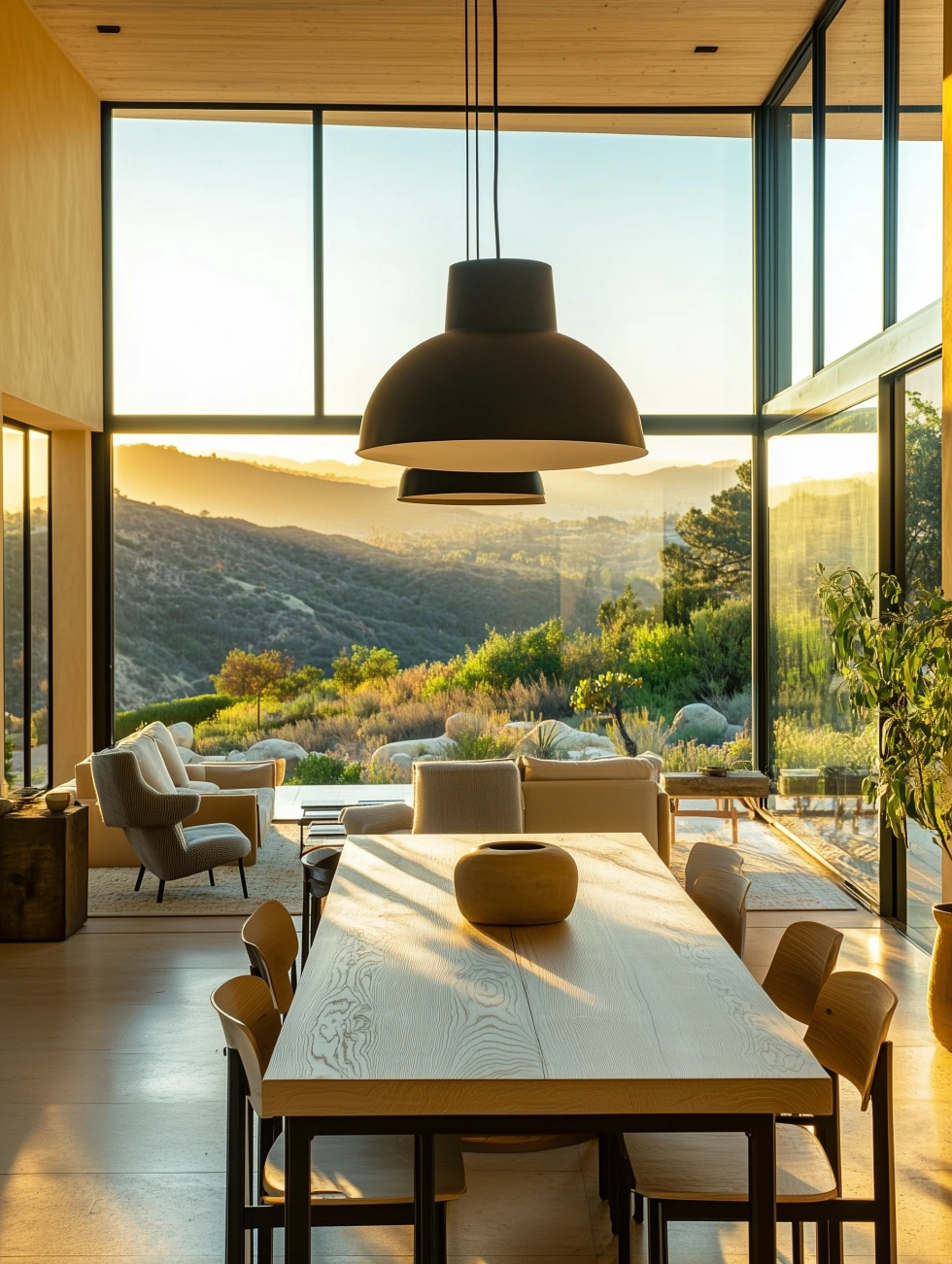
The beauty of mid-century modern lies in its versatility and ability to complement various home styles. Whether you’re working with a small flat or a spacious lounge, this design philosophy adapts brilliantly, focusing on quality pieces rather than quantity. From iconic furniture designs like Eames chairs to geometric patterns and warm wood tones, each element serves a purpose while contributing to the overall aesthetic harmony of the space.
Key Takeaways
- Mid-century modern living room decor combines functional furniture with clean lines, organic shapes and a thoughtful colour palette for timeless appeal.
- Quality over quantity applies to furniture selection, with each piece serving both practical needs and design aesthetics.
- Creating visual interest through geometric patterns, varied textures and statement lighting transforms an ordinary space into a cohesive mid-century design.
The Essence of Mid-Century Modern Design
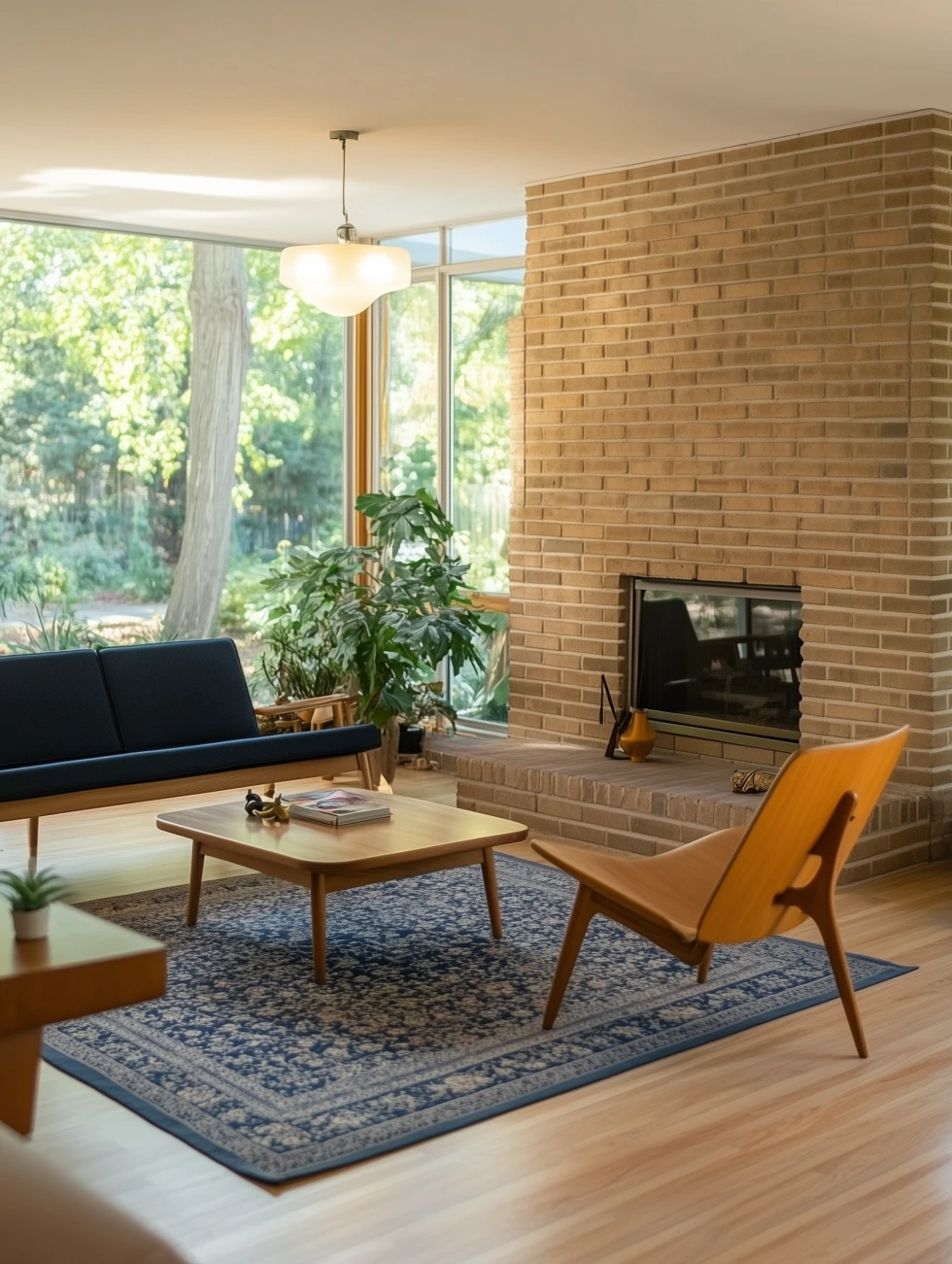
Mid-century modern design embodies a distinctive aesthetic that emerged in the mid-20th century and continues to captivate interior design enthusiasts today. The style blends functionality with beauty through clean lines, organic forms and thoughtful use of materials.
Defining Mid-Century Modern
Mid-century modern design is characterised by its emphasis on clean, uncluttered lines and a seamless integration of indoor and outdoor spaces. The style prioritises functionality without sacrificing visual appeal—a true embodiment of “form follows function” principles.
Furniture pieces typically feature tapered legs, organic curves and minimal ornamentation. Materials like moulded plastic, plywood, metal and glass are used innovatively, often in combination.
The colour palette tends toward both neutrals and bold accents. Think warm woods paired with olive green, mustard yellow or burnt orange for that authentic mid-century feel.
Geometric patterns and organic shapes create visual interest without overwhelming the space. The overall effect is a balanced, harmonious environment that feels both timeless and fresh.
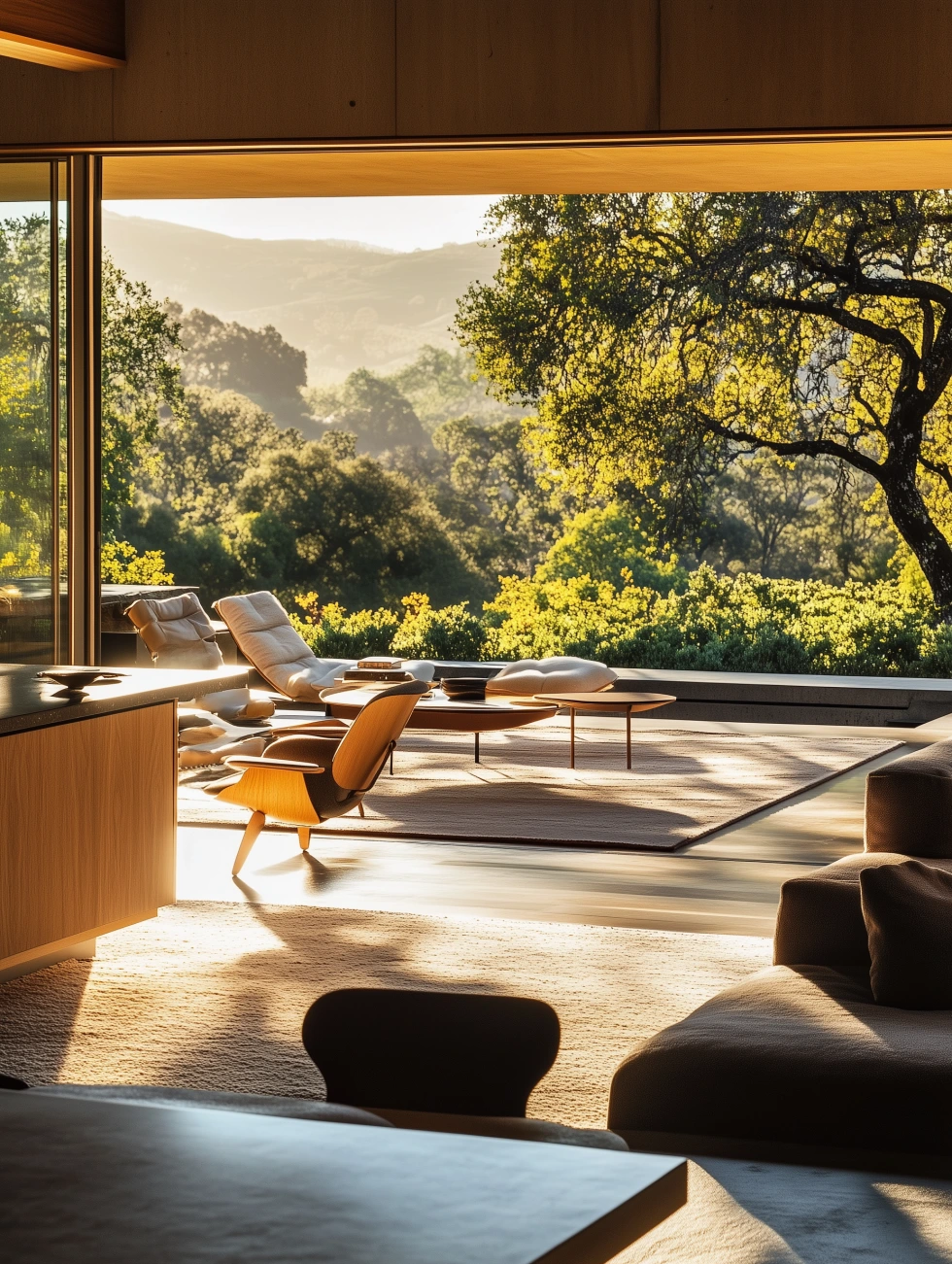
Historical Context and Influences
Mid-century modern design flourished between roughly 1945 and 1975, emerging as a response to post-war optimism and technological advances. The movement gained momentum during America’s suburban expansion, though it drew significant influence from Scandinavian design principles.
Key designers like Charles and Ray Eames, Eero Saarinen and Arne Jacobsen pioneered furniture that prioritised accessibility and functionality. Their work reflected a democratic approach to design—beautiful objects meant for everyday use rather than luxury items for the elite.
The Bauhaus movement’s influence is evident in mid-century modern’s rejection of unnecessary ornamentation. Similarly, the International Style contributed to the emphasis on honest expression of materials and structural elements.
Natural influences also played a crucial role. Mid-century architects and designers sought to create harmony between their creations and the natural world, incorporating organic forms and large windows to blur indoor-outdoor boundaries.
Starting with Space
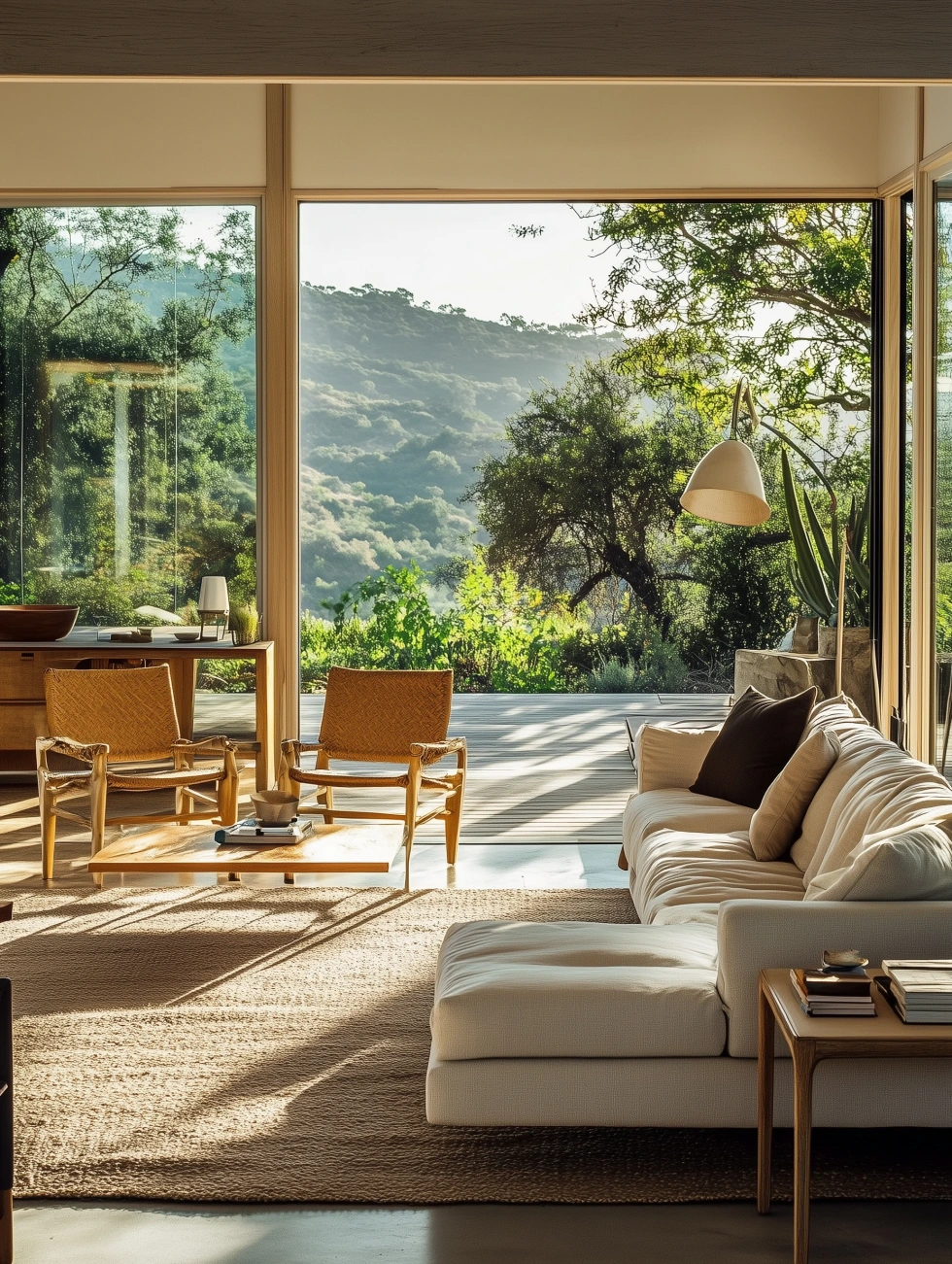
The foundation of any successful mid-century modern living room begins with thoughtful space planning. Before selecting furniture or accessories, one must understand the room’s architectural features and flow to create a harmonious environment.
Assessing Your Living Room Layout
Begin by measuring your living room dimensions and noting architectural features like windows, doors and fixed elements. Create a floor plan to scale, either on graph paper or using a digital tool. This visual reference will prevent costly mistakes when purchasing furniture.
Consider traffic flow through the space. Mid-century rooms typically feature uncluttered pathways and conversation areas oriented around a focal point such as a fireplace or picture window.
The shape of your room dictates furniture arrangement. For rectangular spaces, try creating distinct zones for conversation and media. L-shaped rooms naturally divide into separate functional areas, whilst square rooms benefit from furniture arranged in a circular pattern.
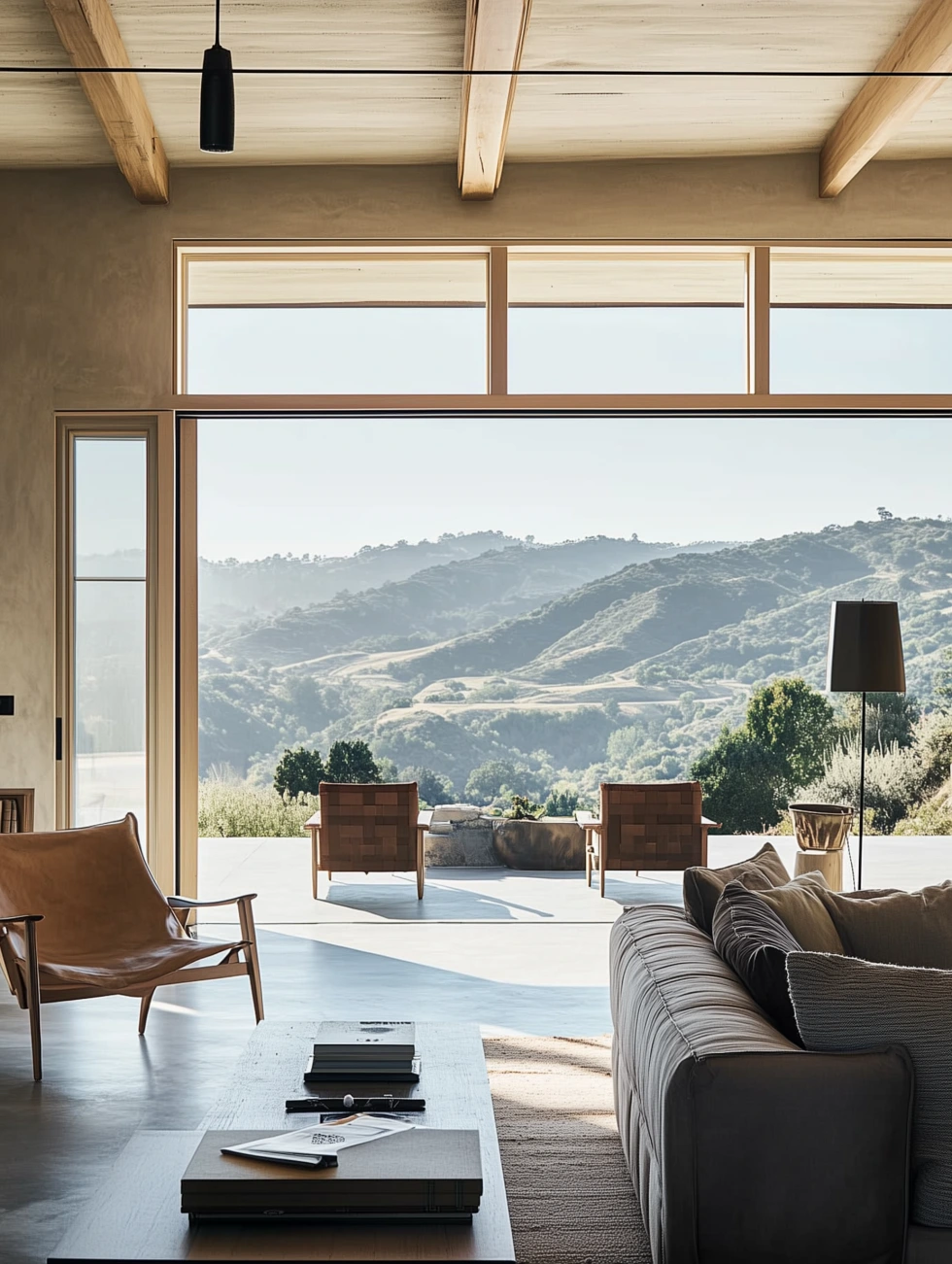
Embracing Natural Light
Mid-century modern design celebrates the connection between indoor and outdoor spaces. Position furniture to take advantage of natural light sources. Large windows without heavy treatments are characteristic of this style.
If privacy is a concern, consider minimalist window coverings like simple roller blinds or sheer curtains in neutral tones. These maintain the clean aesthetic whilst offering control over light levels.
Use mirrors strategically to bounce light throughout the room. A large mirror opposite a window can dramatically increase brightness and create the illusion of expanded space.
For evening ambiance, layer lighting with a combination of pendant fixtures, floor lamps with adjustable arms, and discrete table lamps. Choose bulbs with warm white light (2700K-3000K) to create a cosy atmosphere.
Maximising Functionality in Small Living Rooms
Small spaces can still achieve mid-century style with careful planning. Choose furniture with exposed legs to create visual lightness and the impression of more floor space. Multi-functional pieces like nesting tables or storage ottomans reduce clutter.
Consider scale carefully. Whilst authentic mid-century pieces are often compact, some contemporary reproductions can overwhelm smaller rooms. Look for slimmer profiles and avoid overstuffed furniture.
Wall-mounted shelving systems popularised in the 1950s and 60s provide storage without consuming floor space. These modular systems can be configured to fit awkward dimensions and display decorative objects whilst housing practical items.
Built-in cabinetry, another hallmark of mid-century design, can be custom-fitted to maximise storage in tight corners. Opt for simple door fronts with minimal hardware to maintain the clean aesthetic that defines this design style.
Selecting a Colour Palette
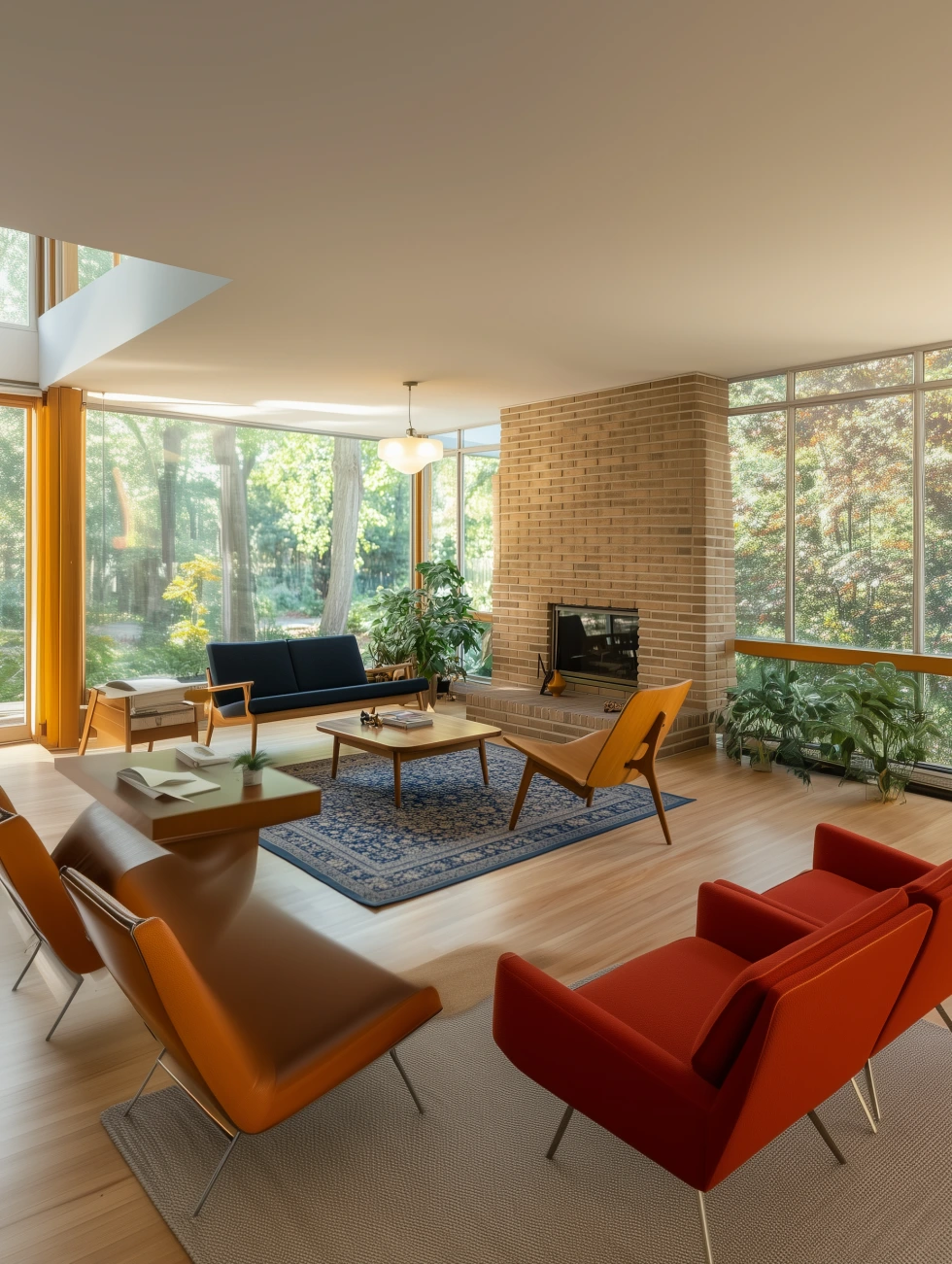
The mid-century modern aesthetic relies heavily on thoughtful colour choices that balance warmth, vibrancy and restraint. The perfect palette combines earthy foundations with strategic bold accents to create spaces that feel both timeless and dynamic.
Incorporating Earthy Colour Palettes
Earthy tones form the backbone of mid-century modern design. Warm neutrals like beige, taupe and cream create a harmonious foundation that allows furniture pieces to shine. Consider using these as wall colours or for larger upholstered items.
Rich, organic hues add depth and authenticity to the space. Avocado green, terracotta and mustard yellow evoke the natural world while remaining distinctly mid-century. These colours work brilliantly as secondary elements through:
- Area rugs with geometric patterns
- Accent chairs or ottomans
- Vintage-inspired artwork
Wooden elements naturally complement these earthy tones, creating a cohesive look. Try pairing walnut furniture with muted sage walls or a caramel leather sofa against a warm beige backdrop.
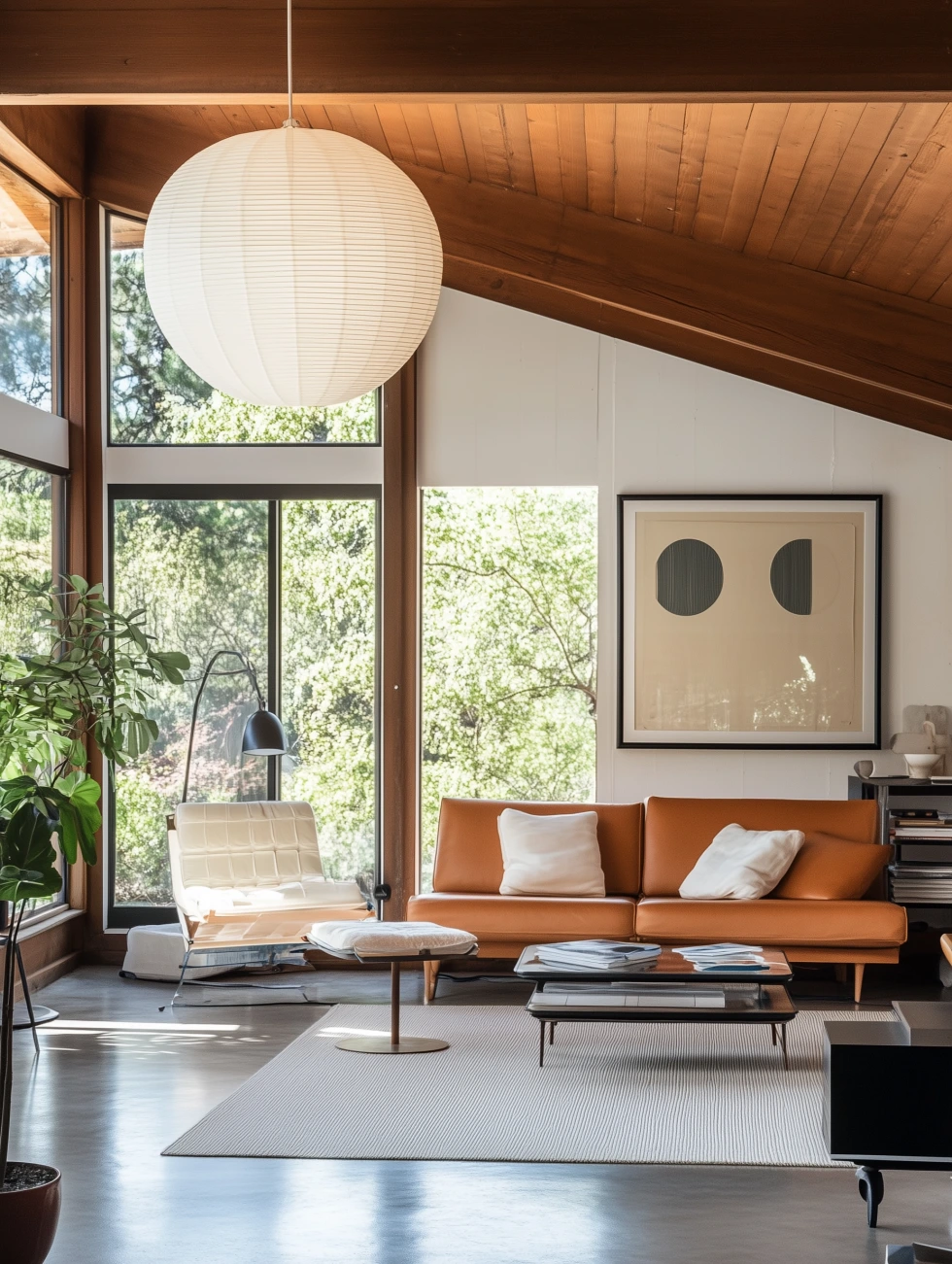
Using Colour
Strategic splashes of bold colour prevent mid-century rooms from feeling staid or predictable. Think vibrant teals, snappy reds and sunny oranges used judiciously throughout the space.
These splashes of colour should be used sparingly and with purpose:
- Statement lighting fixtures in bright colours
- Bold cushions against neutral sofas
- A single painted feature wall
- Colourful decorative objects on shelving
The key is balance. Too many competing bright colours will overwhelm the space and dilute the mid-century vibe. Instead, choose one or two bold hues to complement your earthy base palette.
Try pairing a primarily neutral room with unexpected touches of cobalt blue or burnt orange. These controlled bursts of colour create visual interest while maintaining the sophisticated restraint that defines authentic mid-century style.
Choosing Materials and Textures
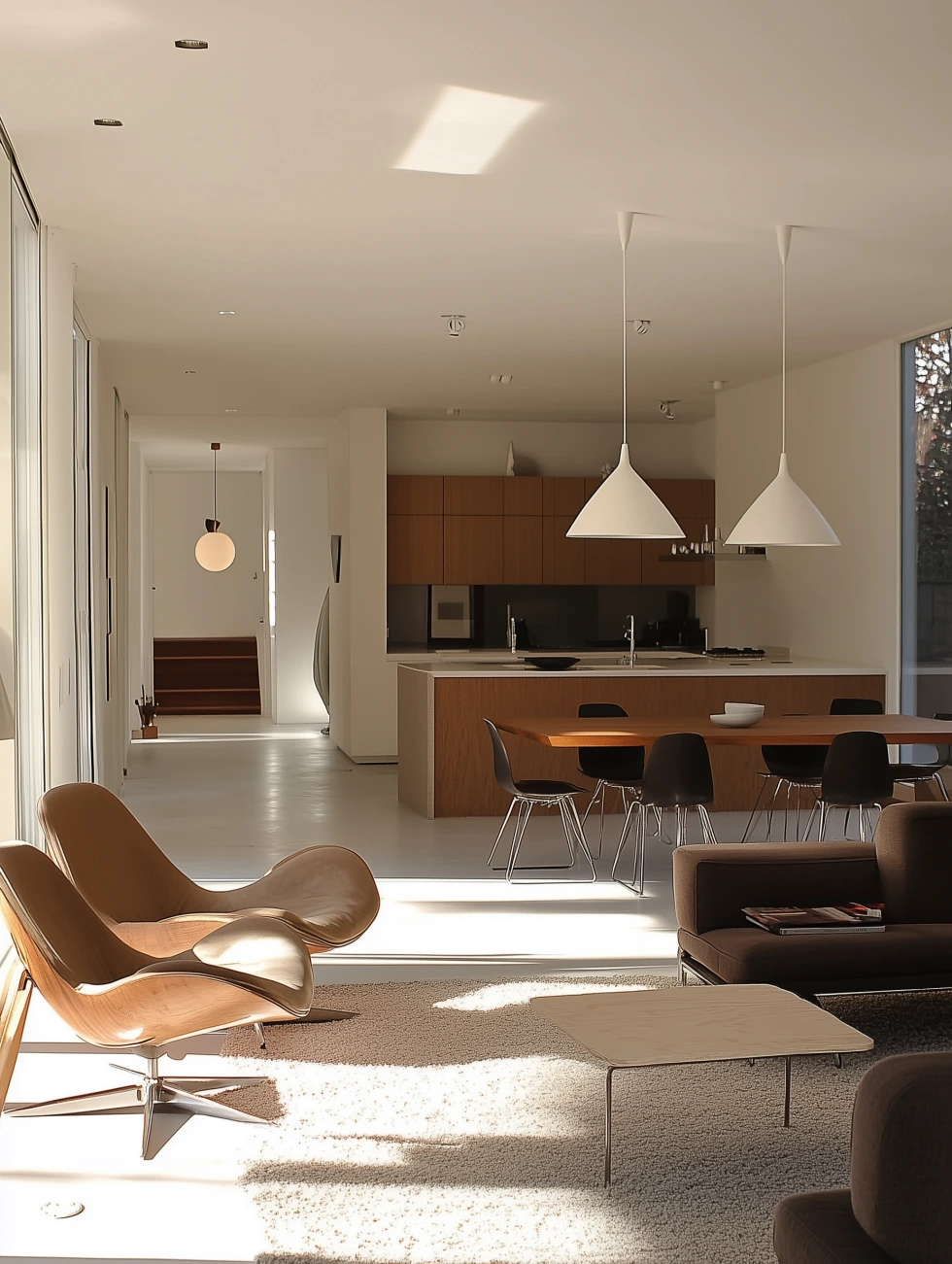
Materials and textures are fundamental elements that give mid-century modern living rooms their distinctive character. The right combination creates visual interest while maintaining the clean, functional aesthetic that defines this iconic style.
Wood and Other Organic Materials
Wood serves as the foundation of any authentic mid-century modern space. Opt for timber with warm tones and distinctive grain patterns—teak, walnut and oak being the quintessential choices. These woods were favoured by iconic designers like Eames and Wegner for their durability and natural beauty.
Exposed wooden legs on sofas and chairs are a hallmark feature, typically tapered and angled outward. Consider incorporating wooden wall panelling for a statement wall, but keep it simple to avoid overwhelming the space.
Complement wooden elements with other natural materials such as stone, rattan or cork. A stone-topped coffee table or sideboard introduces textural contrast, whilst rattan details add visual warmth.
Balancing Different Textiles
The judicious use of textiles softens the clean lines of mid-century furniture. Velvet upholstery on a statement armchair adds a touch of luxury that contrasts beautifully with the otherwise minimalist surroundings.
When selecting fabrics, consider both texture and pattern. Bold geometric prints or abstract designs in muted colours work brilliantly on cushions or accent chairs. Woven textiles with visible texture provide visual interest without dominating the space.
Layer different textiles for depth. A shaggy or flat-woven rug anchors the seating area whilst adding warmth underfoot. Avoid overly fussy curtains—simple linen or cotton panels that allow natural light to filter through are ideal for the mid-century aesthetic.
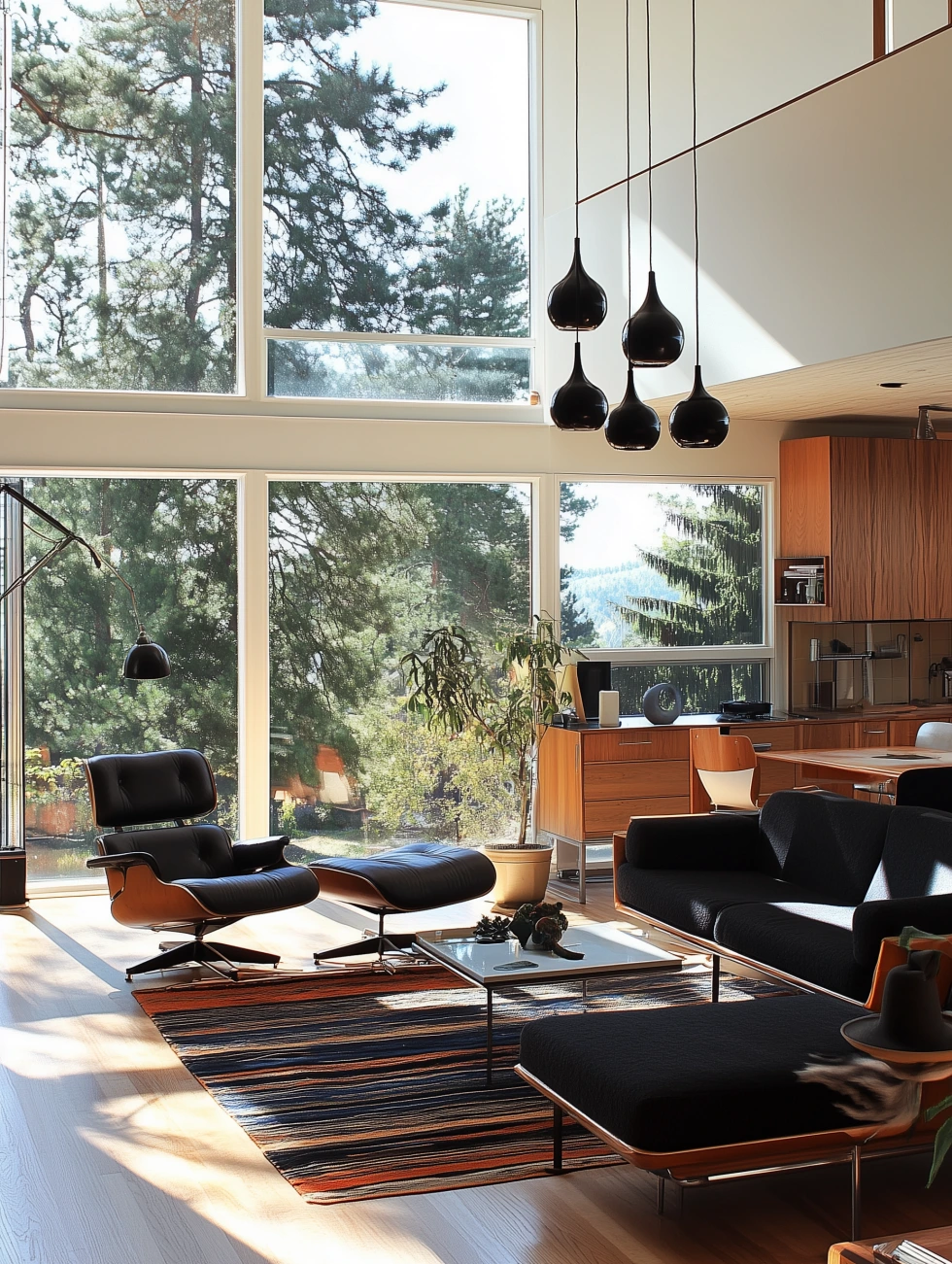
Mixing Industrial Elements with Comfort
Mid-century modern embraces the juxtaposition of industrial materials with more organic elements. Incorporate mixed metals like brass, copper or chrome in lighting fixtures, table frames or decorative objects. These reflective surfaces create visual highlights against matte-finished woods.
Acrylic and fibreglass—revolutionary materials of the mid-century era—can be introduced through transparent side tables or moulded chairs. These materials add a sense of lightness and innovation that characterised post-war design.
Balance these harder elements with comfort. Leather upholstery ages beautifully and adds a sophisticated touch, whilst vinyl offers a similar look at a more accessible price point. Consider a leather Eames-style lounge chair paired with a plush fabric sofa for the perfect blend of comfort and style.
Furniture: Function and Form
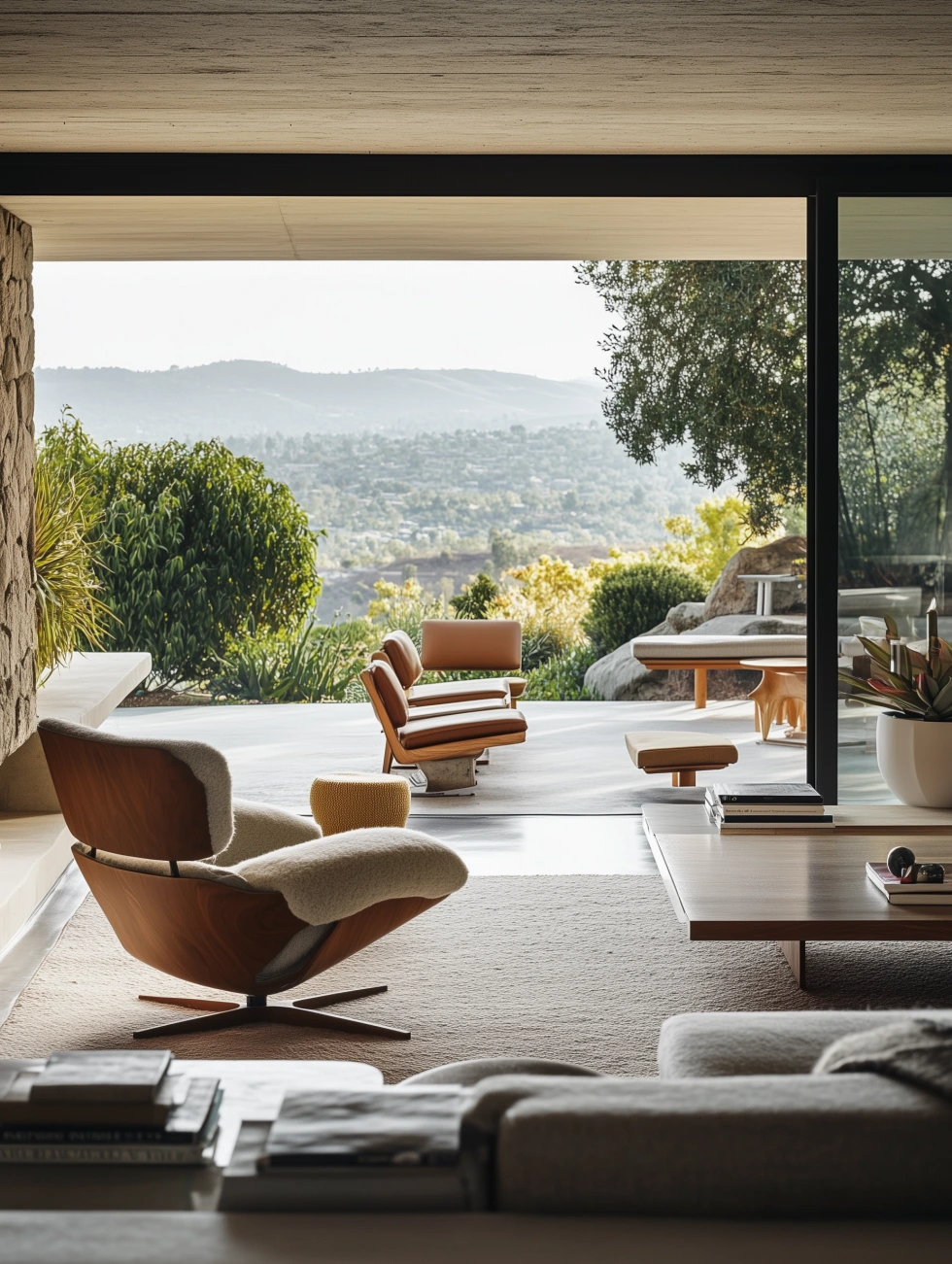
Mid-century modern furniture artfully balances practicality with striking design elements. The iconic pieces from this era feature clean lines, organic forms and innovative materials that still feel fresh decades later.
Iconic Mid-Century Modern Furniture Pieces
The mid-century modern sofa is perhaps the most recognisable statement piece in any authentic living room. Look for designs with tapered legs that lift the piece off the ground, creating that signature floating effect. The best examples feature simple, straight lines with minimal ornamentation.
The Eames Lounge Chair stands as a quintessential mid-century icon—a perfect marriage of moulded plywood and leather that’s as comfortable as it is striking.
Coffee tables from this era typically feature organic shapes and mixed materials. Think walnut or teak with glass or marble tops, often with distinctive sculptural bases.
For dining areas, the Tulip Table by Eero Saarinen eliminates the “slum of legs” with its elegant pedestal base, whilst Hans Wegner’s Wishbone Chair brings warmth through its thoughtful wooden construction.
Innovative Use of Storage Solutions
Wall units and wooden consoles serve as both practical storage and visual anchors in mid-century spaces. Look for pieces with sliding doors, adjustable shelving and modest proportions that don’t overwhelm the room.
Many mid-century designers created modular storage systems that could be configured to suit different spaces. These units often incorporate a mix of open shelving and closed storage behind plain-front cabinet doors.
Room dividers with built-in storage were particularly clever solutions for open-plan living. These pieces defined separate areas whilst maintaining the sense of openness that characterises mid-century design.
Sideboards with slender proportions and minimal hardware provide ample storage without visual bulk. The best examples sit on slim, tapered legs that echo other furniture in the room, creating a cohesive look.
Lighting: Setting the Mood

Lighting serves as the cornerstone of any mid-century modern living room, establishing ambiance while highlighting architectural features and statement pieces. The right illumination transforms a space from merely functional to truly captivating.
Choosing Modern Lighting Fixtures
Mid-century modern lighting favours clean lines, geometric shapes and mixed materials. Iconic sputnik chandeliers with their starburst designs make brilliant focal points in larger rooms. For a more subtle approach, consider globe pendant lights with their simple spherical forms.
Floor lamps with adjustable arms and mushroom-shaped table lamps add both functionality and style. Look for fixtures combining materials like brass, walnut and frosted glass—all hallmarks of mid-century design.
Consider incorporating reproduction pieces from designers like Serge Mouille or Isamu Noguchi if authentic vintage finds exceed your budget. Many contemporary brands offer faithful recreations that capture the era’s spirit without the hefty price tag.
Creating a Balanced Lighting Scheme
A well-designed mid-century living room employs layered lighting to create visual interest and practical illumination. Begin with ambient lighting as your foundation—recessed ceiling fixtures or a striking chandelier that distributes light evenly throughout the space.
Next, add task lighting for specific activities. A sleek reading lamp beside your Eames lounge chair or adjustable wall sconces create perfect spots for reading or conversation.
Accent lighting completes the scheme by highlighting architectural details or prized possessions. Small spotlights can showcase artwork, while strip lighting beneath shelving adds subtle drama.
Natural light remains essential to mid-century spaces. Avoid heavy window treatments that block sunlight; instead, opt for sheer fabrics or wooden blinds that can be fully opened during daylight hours.
Remember that dimmable fixtures offer flexibility for different moods and activities—an essential feature for the modern living room that transitions from daytime functionality to evening relaxation.
Decor and Accessories
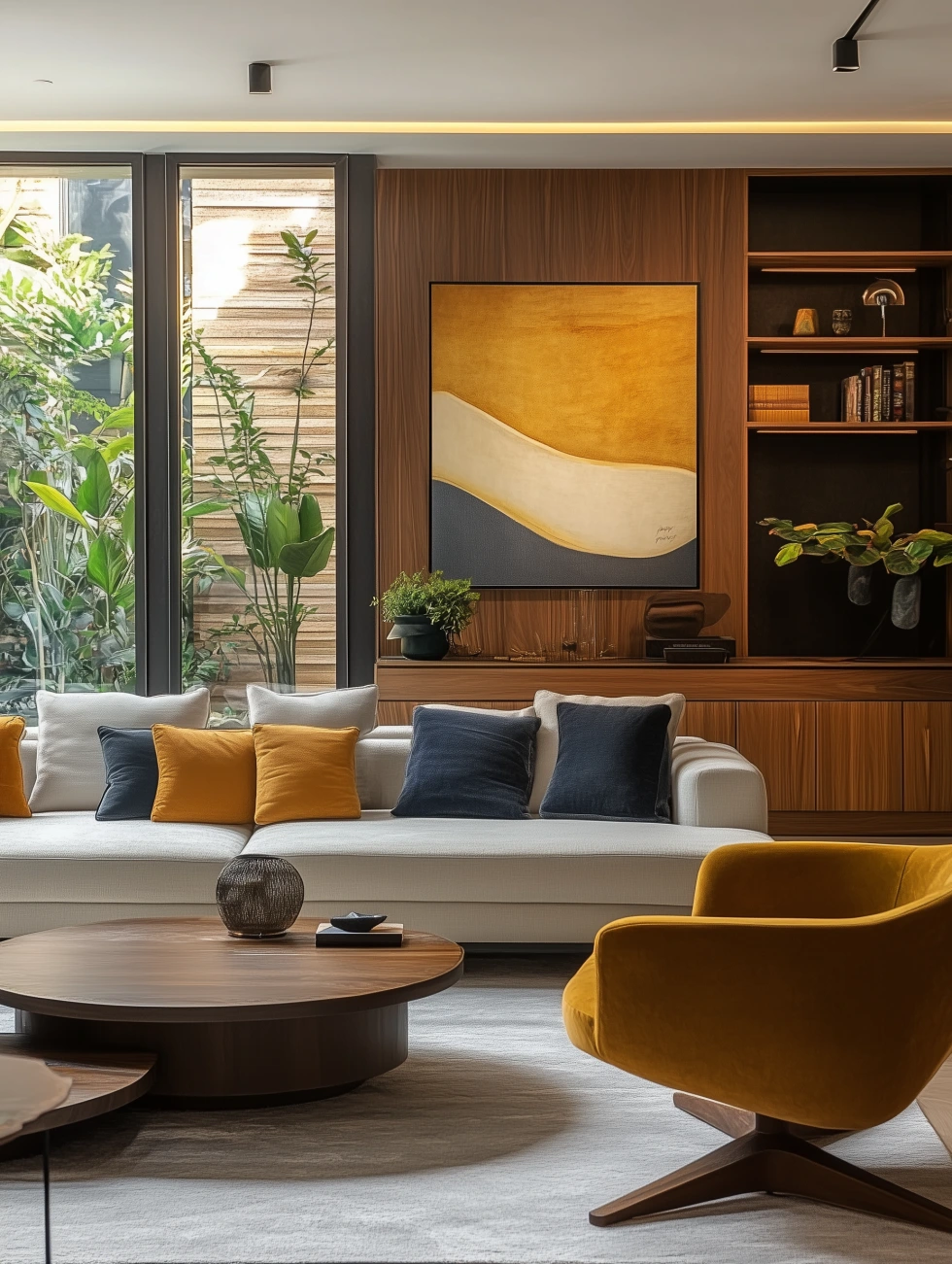
The finishing touches in a mid-century modern living room bring the space to life and showcase the era’s distinctive aesthetic. Carefully chosen decorative elements can transform a basic living area into an authentic mid-century showcase.
Art and Ornamentation in Mid-Century Modern Decor
Mid-century modern art favours bold geometric patterns, abstract forms and striking colour combinations. Consider investing in prints by iconic artists like Eames or Noguchi, whose work epitomises the era’s aesthetic principles.
Wall art should feature organic shapes or geometric patterns in muted colours with occasional pops of mustard yellow, burnt orange or teal. Original art doesn’t need to break the bank – vintage-inspired prints can create a similar effect at a fraction of the cost.
Decorative objects should be purposeful rather than purely ornamental. Look for:
- Starburst clocks
- Brass candlesticks
- Geometric bookends
- Sculptural vases in organic shapes
Avoid cluttering surfaces – the mid-century philosophy embraces minimalism and appreciates negative space. Choose fewer, carefully curated pieces rather than numerous small trinkets.
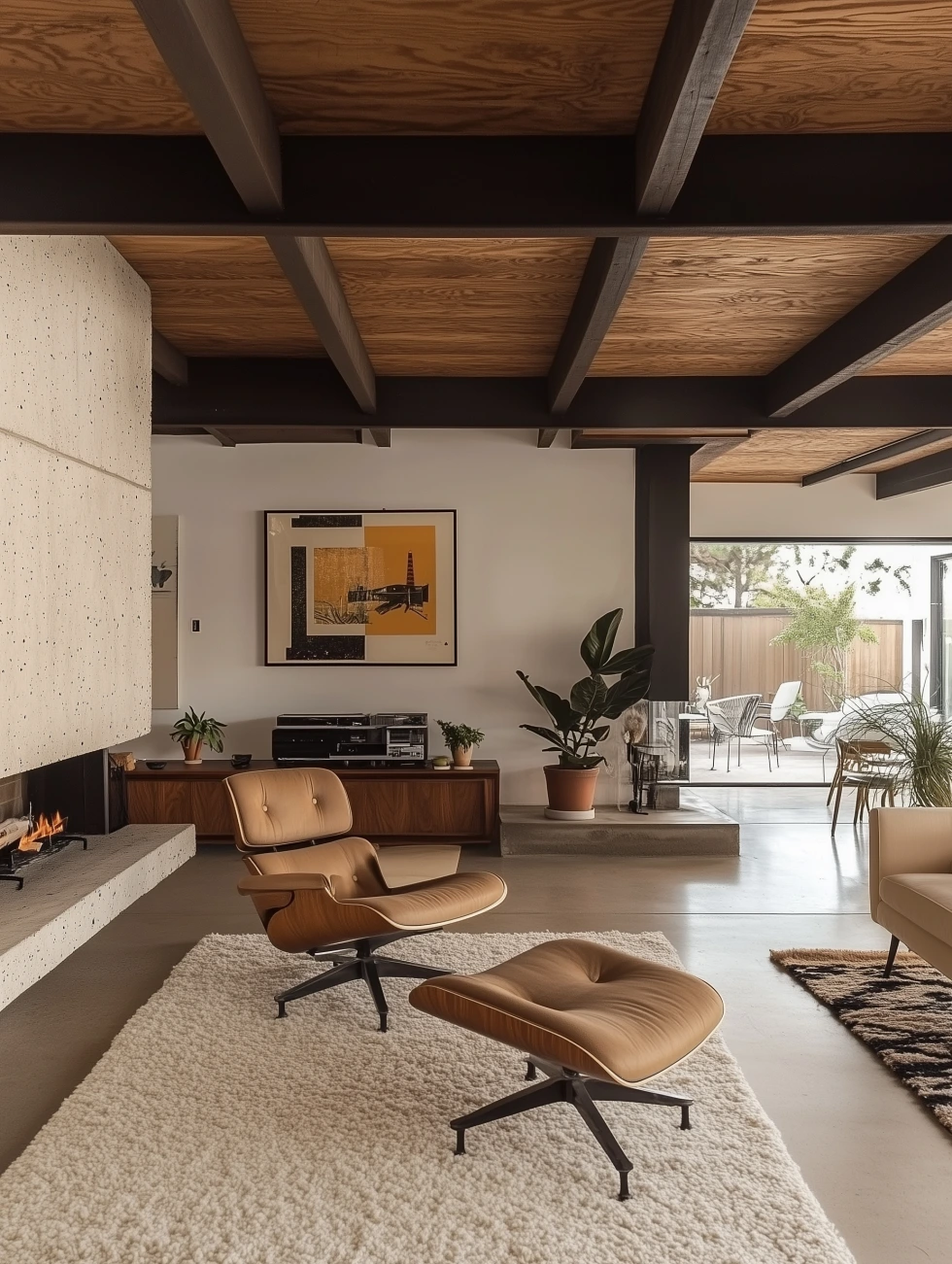
Integrating Indoor Plants and Natural Elements
Indoor plants were a staple in mid-century homes, bringing natural elements indoors and softening the clean lines of the furniture. Spider plants, rubber plants and fiddle leaf figs all complement the mid-century aesthetic beautifully.
Display plants in ceramic or wooden planters with slim legs to echo the furniture styling. Hanging planters create visual interest at different levels whilst preserving valuable floor space.
Beyond plants, incorporate natural materials throughout your decor. Wooden bowls, stone sculptures or woven wall hangings add texture and warmth. These elements create a pleasing contrast with the sleek, manufactured furnishings typical of mid-century design.
Terrariums and glass planters also work brilliantly, reflecting the era’s fascination with new materials and scientific aesthetics. Position these thoughtfully to catch light and create interesting shadows across your living space.
